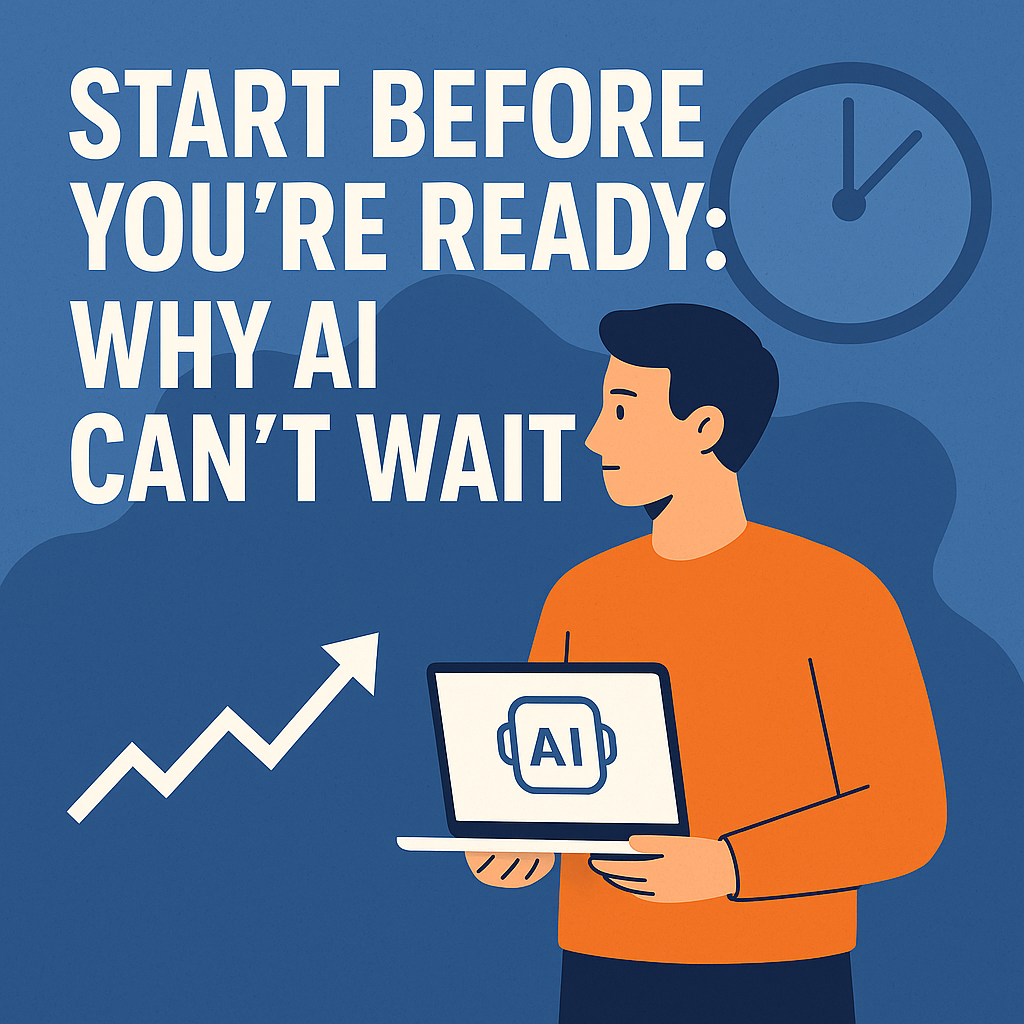
You Don’t Need an AI Strategy to Start Using AI
Adopting AI today, without waiting for the perfect use case, is the fastest way to build internal capability, stay competitive, and avoid falling behind in a rapidly evolving landscape.
💭 Still Waiting to "Figure Out AI"? That Is the Risk
Many teams today are stuck in analysis mode—waiting for the perfect AI use case, the ideal tool, or a senior hire to lead the way. But here's the hard truth: if you're not experimenting with AI yet, you're already behind.
You don’t need a Chief AI Officer or a five-year roadmap. You just need to start.
📉 The Hidden Cost of Doing Nothing
Every day you wait:
- Your data stays siloed and underutilized
- Your team misses opportunities to build AI fluency
- Your competitors inch ahead—automating faster, learning more, and growing leaner
The gap is widening. And the longer you wait, the harder it gets to catch up.
🛠️ What Starting Small Actually Looks Like
You don’t need to “go big” on AI. Some of the best starting points are surprisingly simple:
- Drafting emails or client reports with tools like ChatGPT or Microsoft Copilot
- Tagging customer inquiries automatically with AI-enabled CRM plugins
- Summarizing meeting notes using AI transcription tools
- Cleaning or classifying internal data with no-code automations
Think of these not as projects, but as habits—ways to slowly embed AI into everyday workflows.
📈 Early Movers Build Compound Advantage
Companies that start now gain:
- Organizational learning: Early use builds internal comfort, curiosity, and capability
- Better data foundations: AI requires structured data—start cleaning and connecting now
- Faster iteration cycles: Every test gives feedback. Every feedback loop builds momentum
You don’t need a perfect plan. You just need movement.
🧠 Final Thought
The companies winning with AI aren’t the ones with the most funding or the fanciest models.
They’re the ones who started before they were ready.
📣 Call to Action
Curious where to begin? Start by picking one repetitive task your team does every week—and explore how AI could automate, assist, or accelerate it.